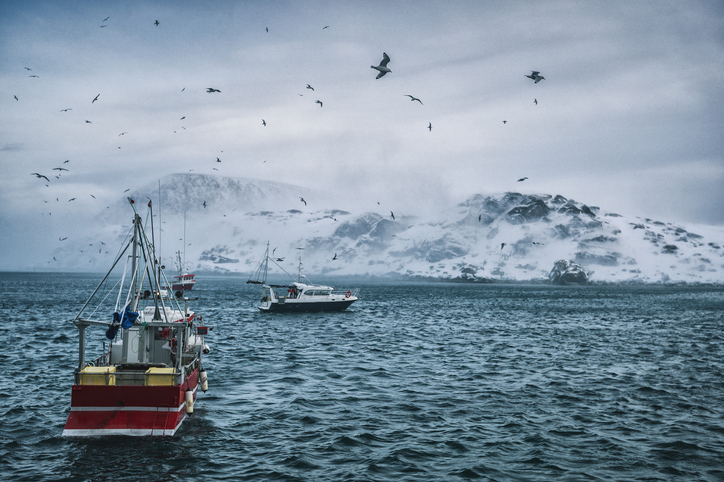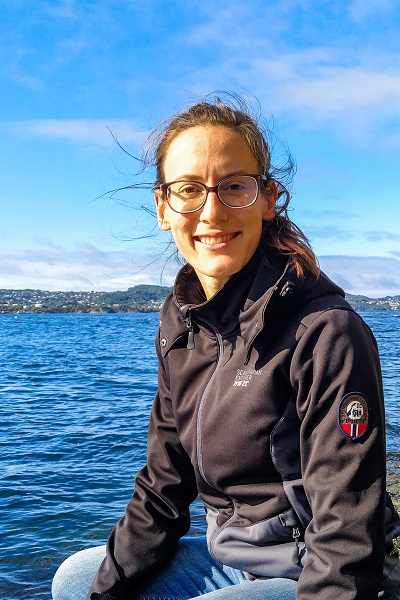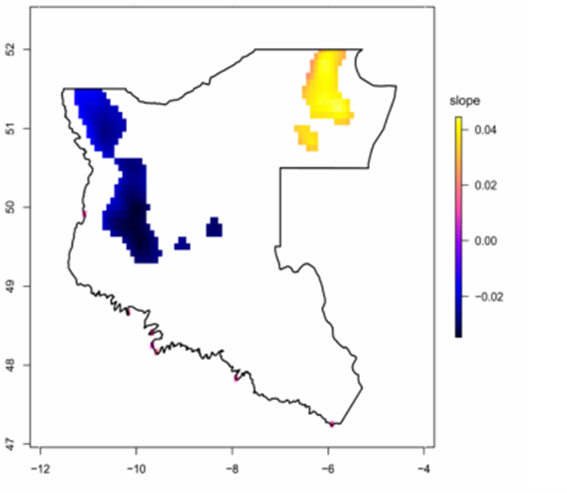Expert testimony: climate change and redistribution of commercial fish populations
- 21 June 2022
- Category: News

Climate change directly influences our oceans and modifies their characteristics. There are various effects, in particular the increase in temperature and ocean acidification (there is more and more CO2 in the atmosphere, which, through contact with the water layer, is diluted in the sea, acidifying the ocean, and lowering its pH).
All ecosystems, and in particular the commercial fish species that are the basis of the diet in many countries, are directly affected by these changes.
We met with Laurène Merillet, marine ecosystem modeller at CLS in the department responsible for sustainable fisheries management activities, who shared her analysis of these phenomena with us.
Laurène, Can you tell us more about your background and areas of expertise?
“I’m a life sciences engineer, I completed my PhD in collaboration with the National Natural History Museum and Ifremer on the inclusion of different facets of biodiversity in characterizing the state of health of exploited marine ecosystems.
This allowed me to assess the sensitivity of different ecosystem components to fishing and climate change and to evaluate the efficiency of management measures. I was then recruited as a post-doctoral researcher at the Norwegian Institute of Marine Research (IMR) to study the effect of climate change on Arctic fjord ecosystems.
I now model marine ecosystems (from intermediate level food chain species to top predators) in the Innovation and Expertise team at CLS.”

How is global warming changing the habitat of fish species?
There are two main trends in the scientific literature on fish responses to climate change. With the increase in temperature, these species will seek to remain in areas corresponding to their thermal preference:
- they will either move towards the poles and modify their spatial distribution
- or move to deeper areas.
In all seas and oceans, the areas exploited by fisheries will undergo major changes in the coming years. This is particularly true of the Celtic Sea, a very important area for French fisheries.
Can you give us more details on the Celtic Sea case?
An analysis of fish communities has identified species with a lower thermal preference than others in this area (cod Gadus morhua and plaice Hippoglossoides platesoides).
However, a significant increase in temperature of 0.04°C/year in average has been observed in the areas north of the Celtic Sea over the period 2000-2016 (yellow area in Figure 1) l. These cold-water species will likely have to move North and out of the Celtic Sea to follow cooler temperatures.
These changes will profoundly modify fisheries, as fishermen will have to follow these species if they are able to do so (limitation of fishing areas) or change their target species.

Fjords are one of the first ecosystems to be affected by climate change. What can we observe there ?
At the northern tip of mainland Norway, Laurène conducted a study over the period 2007-2019, showing that climate change is impacting fish populations in the fjords with measurable effects.
Sea temperature is increasing outside the fjord but, Laurène and her colleagues observed a significant environmental change inside the fjord: a decrease in the salinity of the water.

As a result of increased precipitation on land, there is more fresh water in the fjords, which leads to a change in the habitat of the species.
In addition, the increase in temperature along the Norwegian coast is causing fish populations from southern Norway (blue whiting Micromesistius poutassou, and a small forage fish: the Argentina), which were previously not very present in this fjord, to move northwards and to be increasingly present there.
On the contrary, previously present cold-water species such as haddock (Melanogrammus aeglefinus) show a decrease in population.
Thanks to its scientific teams, CLS is a pioneer in the collection and analysis of ocean data.
This information allows us to better understand the profound changes on our planet, and to support decision-makers and stakeholders in the field in the implementation of good practices, key to the sustainable use of our marine resources.
References
Mérillet, L., Kopp, D., Robert, M., Mouchet, M., & Pavoine, S. (2020). Environment outweighs the effects of fishing in regulating demersal community structure in an exploited marine ecosystem. In Global Change Biology (Vol. 26, Issue 4) :
- https://doi.org/10.1111/gcb.14969
- https:/
/ www.researchgate.net/ publication/ 338221773_ Environment_ outweighs_ the_ effects_ of_ fishing_ in_ regulating_ demersal_ community_ structure_ in_ an_ exploited_ marine_ ecosystem
Mérillet, L., Skogen, M. D., Vikebø, F., & Jørgensen, L. L. (2022). Fish Assemblages of a Sub-Arctic Fjord Show Early Signals of Climate Change Response Contrary to the Benthic Assemblages. Frontiers in Marine Science, 9 :
